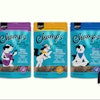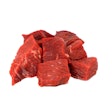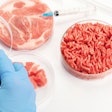
Bone broths are experiencing rapid growth in the human food market. A review of several market databases shows the market size in human food ranges from US$1.1 billion to US$1.6 billion in 2024, with projected upward growth to US$2.8 billion by 2034. This expansion is fueled by perceived nutritional benefits and several key factors: the rise of gut-health and inflammation-reducing products, the popularity of collagen powders and capsules, and the ongoing consumer desire for low-carb, high-protein meals.
While this market has grown rapidly in human foods, the use of broths and bone broths has expanded equally fast in the pet product market. Definitions matter. Terms matter. There are important differences and misunderstandings in the human food market that will likely carry over to the pet market.
Current broth standards and definitions
The U.S. Department of Agriculture (USDA) sets standards for many human foods but does not have specific standards for the grading of soups or broths. Yet, it does have standards as to what ingredients can be added. The USDA is primarily responsible for safety and quality of meat, poultry, eggs and milk products. According to the U.S. Food and Drug Administration (FDA) website, a 2023 article described the regulatory differences of meats and meat products for human consumption differently than the USDA. It states that a broth must target a moisture-to-protein ratio (MPR) less than 135:1, where the USDA targets broth with an MPR of 135:1 or more. This would indicate that broths have different regulatory specifications.
Do the FDA or USDA have a definition for bone broth? The quick answer is no. The assumption is that it should be primarily made from bones, yet there are no standardized ingredients or preparation methods. Should a broth, stock and bone broth all be connected to an MPR under 135:1? What about pet foods made in a human food plant where the USDA oversees and has a different specification for broth?
In the USDA Food Standards and Labeling Policy Book, broths and stocks are referred to as dissimilar food products in terminology as parts of other foods. Yet, it states “no distinction has been made between broth and stock, and it is suggested that these may be used interchangeably.” The AAFCO definitions followed the FDA’s MPR standard in its definition (described later in this article).
Broths and stocks in the human food market
Since consumers connect their foods to their pets, it would be good to have understanding as to how these terms are used in the human food market. Chefs and restaurants describe these ingredients (broths, stocks and bone broths) as different products for different uses.
Stocks are generally described as made from water, animal bones, vegetables and aromatics. It is accepted as a thicker consistency than broths using bones, meat and cartilage with vegetables and herbs cooking three or more hours. Oftentimes a stock might be in gel form and must be heated. It is used to bring extra texture to a sauce, braise or stew when a richer, more complex flavor is desired, or a thicker consistency is a goal.
In contrast, broths are a thinner consistency using mostly meat with occasional bones with vegetables and herbs cooking for 1-3 hours. This thinner ingredient is used to provide specific flavor to a recipe like soups, sauces and stews with a lighter delicate flavor. Ultimately, the thinness of a broth is part of the desired outcome of the soup or food product.
Celebrity Chef Alton Brown defines a stock as a cooking liquid in which animal bones and connective tissues are cooked for a long period of time yielding a thick, collagen-rich liquid. He defines a broth as a cooking liquid in which animal meat are cooked for a shorter period yielding a flavorful, thinner liquid.
MD Anderson Cancer Center addresses the question "Is bone broth good for you?" in their analysis. While many nutritional and health benefits are highlighted, concerns are raised regarding overuse due to generally high sodium levels. The article defines broth, stock and bone broth based on cooking time in water with other components such as vegetables, herbs, spices, meats and bones. Broth is not necessarily simmered with bones, whereas stock and bone broths are. They recommend that broths be simmered for two hours, stocks for 4-6 hours, and bone broth for up to 24 hours.
A well-known human food manufacturer does not elaborate on process differences between bone broth, stock and broths, but their chicken products illustrate the differences among the three products in nutritional content and purpose:
Use in the pet food space
As was mentioned, stock and broth are defined interchangeably in AAFCO. Like the human food industry, there is no specific definition of a bone broth versus other broths (e.g., beef, chicken, turkey, fish, etc.). The current definitions in the Official Publication state:
A. Stock/broth: Obtained by cooking mammalian or poultry bones, parts and/or muscle tissues. The crude protein content of the stock/broth must be no less than 90% on a dry matter basis. For the stock/broth to be labeled as such, the moisture-to-crude-protein ratio must not exceed 135:1 (135 parts water to 1 part crude protein). The product must bear a name descriptive of its kind, composition or origin, such as, but not limited to, meat, beef, pork, poultry, chicken or turkey, and be called either stock or broth (Proposed 1997, amended in 2001 and adopted in 2002).
B. Fish stock/broth: Obtained by cooking fish and/or other marine animal products including bones, shells, parts and/or muscle, but not including fish solubles. The crude protein content of the stock/broth base material must not be less than 80% on a dry matter basis. For the stock/broth to be labeled as such, the moisture-to-crude-protein ratio must not exceed 135:1 (135 parts water to 1 part crude protein). If the product bears a name descriptive of its kind, composition or origin, it must correspond thereto; and may be called either stock or broth (Proposed 1999, amended 2001, published 2002, amended 2015).
A quick search of a pet product website lists dozens of broth products including liquids, powders, toppers, supplements, chews and even biscuits. Rarely (if ever) do you see the term stock used in pet foods. Added water into products (e.g., canned foods) has been replaced with liquid or dry broth addition.
Like the human food channel, there is no definition for bone broths except the assumption that they are made primarily from cooked bones. The amount of salt also varies in these products depending upon the process of preparation. To add to the confusion, some have added vegetable broth to products. It must be assumed that these are cooked vegetables of unclear content and purpose which often contain minor levels of garlic and onion (perceived negatives to pets). It must be noted that there is no term for vegetable broth in the human food space either. Many chefs, however, cook vegetables to create a vegetable liquid to bring specific flavors to foods.
AAFCO definitions were approved directly from FDA regulations over 20 years ago and were generally accepted before the rapid growth of broths in both human and pet markets. Updated definitions are warranted to include a bone broth definition even if the human food market does not follow. Consumers expect high-quality pet products with consistent definitions. The specific benefits of broth, stock or bone broth are limited but clearly offer good flavor and potentially chondroprotective components to support joint health and intestinal health. These need to be explored.

















